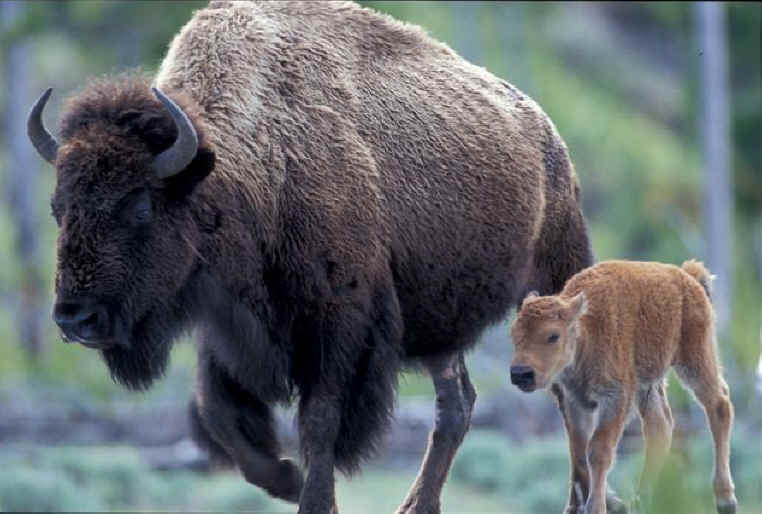

Know your Bison



Utilizing the bison.
Blood consumed at the kill site.
Intestine stored against starvation.
Bones for scrapers, awls, handles.
Sinew for lacing, reinforcement, sewing.
Horns as containers, spoons, ladles, cups, headdresses.
Dew claws used in rattles.
Hides for clothing, housing, and gear.
harvested in summer from yearling female.
large enough.
only 40 lbs vs. bull hide 200 lbs.
more pliable.
tanned to color and stiffness desired
liver (dark), brain (light).
buckskin - fully tanned
hangs like cloth.
soft, opaque surface.
rawhide - partially tanned
stiff.
hard, translucent.
scraping for soup.
Hair made into rope and yarn.
Gallstones ground into yellow and other colored pigments.
Hooves boiled for sizing and glue.
Rawhide scraped thin for earthlodge windows.
Dung burned as fuel.
Stomach and bladder made into bags. Stomach used as a pot for boiling s
Tails decorated and used as fly swatters.
Meat prepared as food
roasted, fresh.
stewed, fresh or dried.
jerked.
pemmican.
Cakes made by combining dried ground meat, fat, and berries.
They are dried and stored for a quick nutritious meal.
Plains fast food!!
Bison (Bison
bison) Information from the Neil Smith National Wildlife Refuge:
Male bison often
weigh 2,000 lbs. or more and stand 5 to 6 feet high at the shoulders.
The huge head and
great hump (used to make shields) are covered with dark brown wooly hair
and contrast with
their relatively small hips.
Despite their great
size and bulk, bison have amazing mobility, speed, and agility and are
able to sprint at speeds of 30 mph.
Bison have cloven
hoofs. Both male and female have a single set of hollow, curved horns.
Bison have a life expectancy of about 20 years.
Males live alone most of the year, but during the breeding season, mid-to-late summer, the bulls join the cows and young bison herd.
Short history of
the Bison:
In 1806, Lewis and
Clark wrote, "The moving multitude...darkened
the whole plains."
As the American
frontier expanded westward, a systematic reduction of the bison began
around 1830.
Organized groups of hunters killed bison for hides and meat, often killing up to 250 bison a day.



Estimates indicate there were once between 30 to 75 million bison in North America, but the great herds were reduced to less than 300 individual animals by 1900.
Today, bison populations are strong 200,000
buffalo roam the plains, many at Wildlife Refuges, Parks, and some
tribes and individuals have private herds.

Once in a great while a sacred white bison calf is born. These rare births are greeted with celebration, pilgrimages, offerings, and prayers as the return of White Buffalo Calf Woman. She has relevance for Native Americans that might be considered similar to the promise of the rainbow as shown to Noah. It is a sign that tragic times are over and that peace and prosperity lie ahead.
Tragically, when these calves are born some have been killed in acts that appear to be motivated by animus for Native Americans. They are usually shot by unknown parties in the middle of the night.
Interestingly, these white calves are not albino, that is, lacking in pigment. They are more like the towhead children of European origin - they are born white blond, but by adulthood their hair has turned brown. These calves tend to be slightly more red than average when they are grown, but the difference is not noticable to the untrained eye.